Day five of my Mid America trip had me scheduled with a demo in Dayton Ohio.
Before I could leave, I had one tree I needed to finish in Ft. Wayne at the Kittle Homestead.
It was a Chamaecyparis pisifera “boulevard” the common names being a Boulevard Cypress, Japanese False Cypress, or Sawara False Cypress.
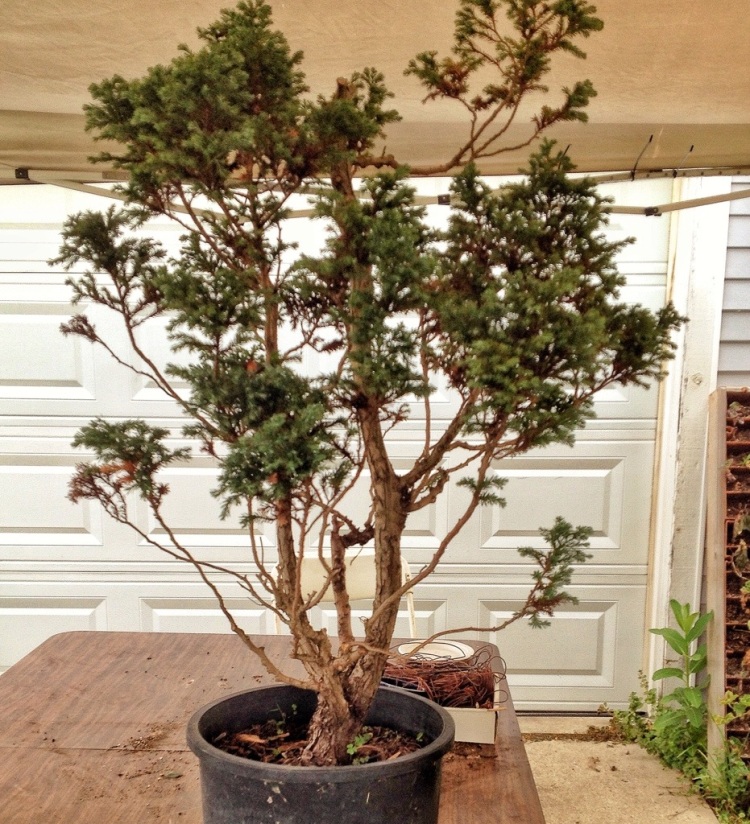
Neat looking tree.
The nebari is decent. Tight foliage pattern.
I’d take it, if I could grow it in Florida, which I can’t.

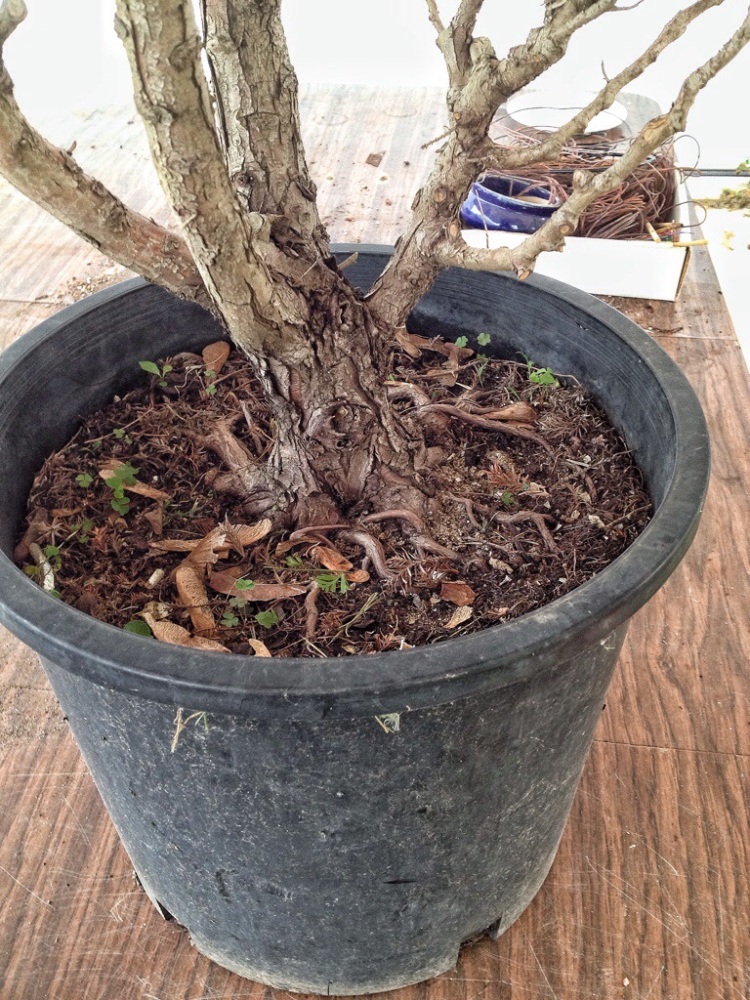
After doing some research and looking at some examples on the inter-webs I think I have a plan of action.
Maybe.

On my travels so far I’ve been struck by how tall trees seem to grow here in the north.
The biggest trees in Florida are the live oaks, and they tend to be very wide.
Here, even though the bases and trunks are big, they’re about one third taller, at least, than a live oak.
I like to teach about the generic tree that exists in all of our heads and that we can utilize that “ideal” in the styling if our trees.
The concepts of taper, radial branches getting closer and shorter as you travel up the tree, a strong nebari, etc. are all concepts that are in our minds (we don’t know it until we are shown) that the bonsai artist (or any artist) uses in the illusion and art of making small, young trees look like big, old trees.
That being said, each part of the country (and the world) has a different idea what a tree might look like.
With that said, back to our tree.
This species, up here in the frozen north, is subject to leaf burn in the summer and leaf burn in the winter.

Which seems like a bummer to me.
If you don’t keep it pruned tight, it’s very likely to get leggy. And the old foliage dies back if it is shaded out too much.
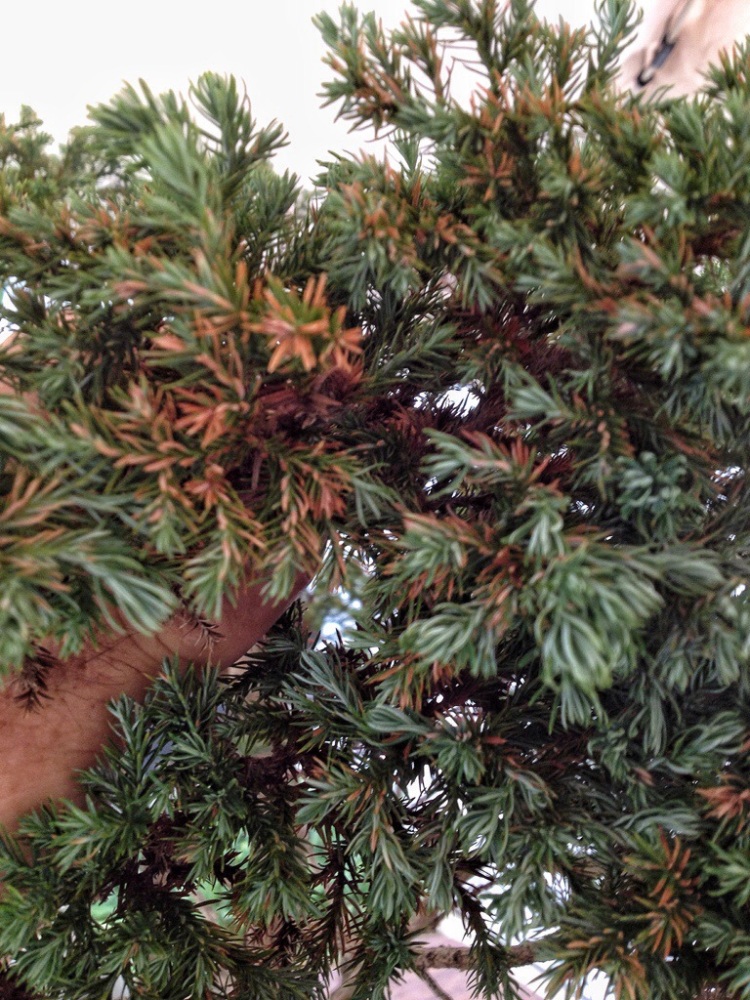
Most of the dead stuff has been cleaned out-many thanks to Darlene Kittle for that.
My thinking, stylistically, with the tree is an open, airy structure that well……you’ll see.
This branch is the thickest but it had no taper for about two feet.

I think that all conifers need some deadwood and, since it lack taper, it’s the candidate.
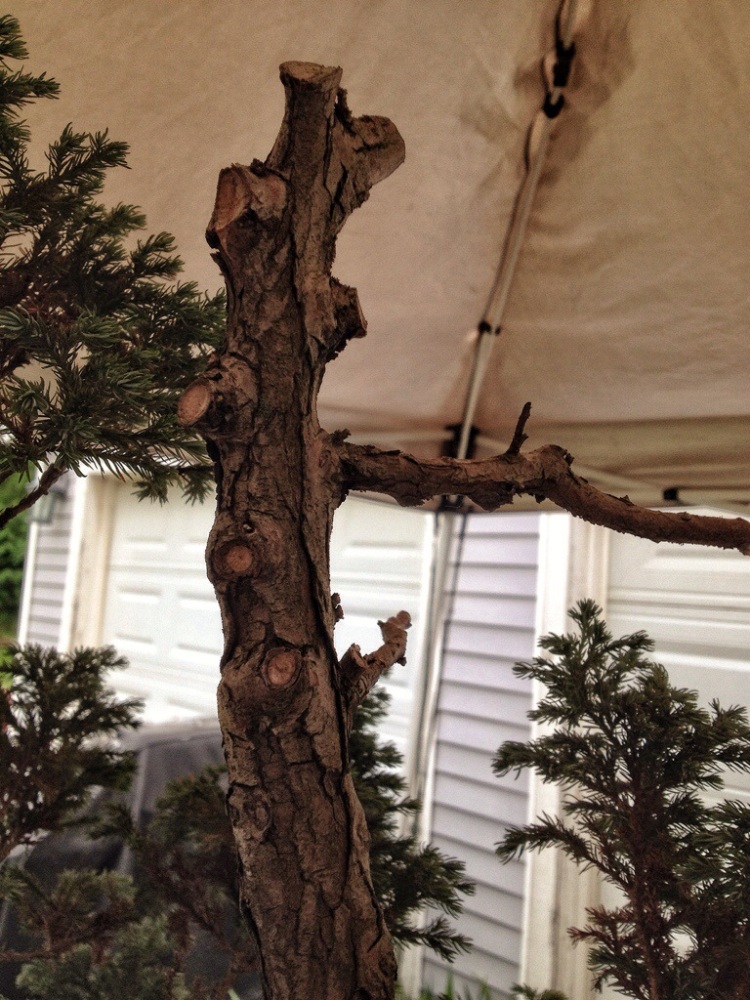
It’s mostly dead as well, the brown half on it is dry and dead.
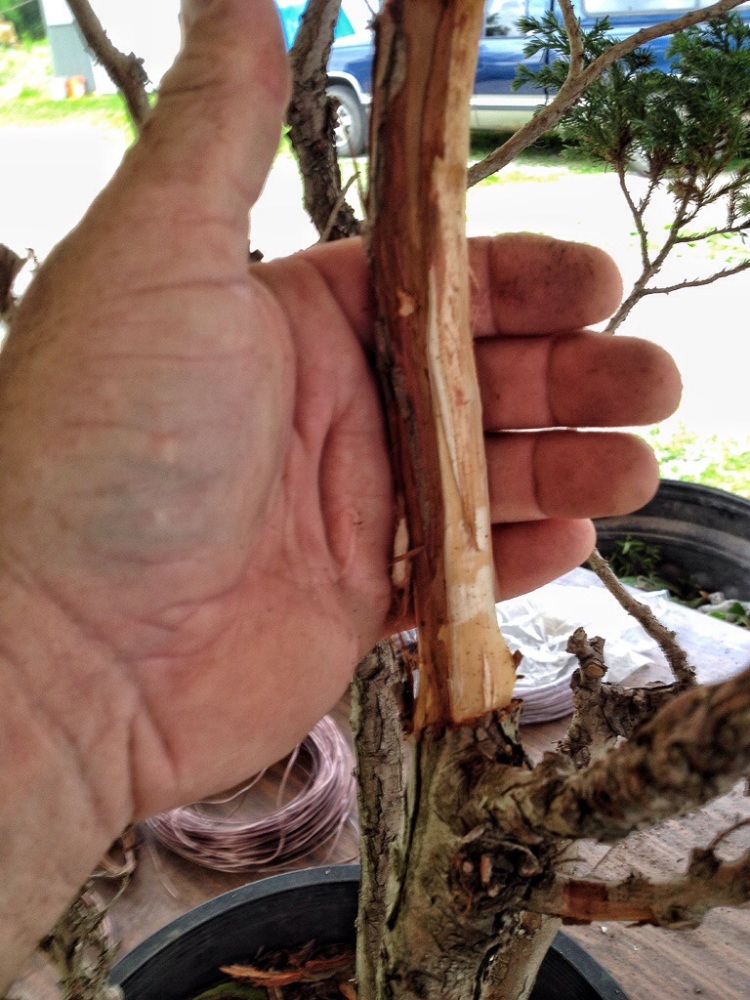
The carving process is easy on conifers.
No power tools needed even.
Strip the bark and start chewing the wood away with your teeth, a little at a time.
Or you could use Jin pliers. They work too.
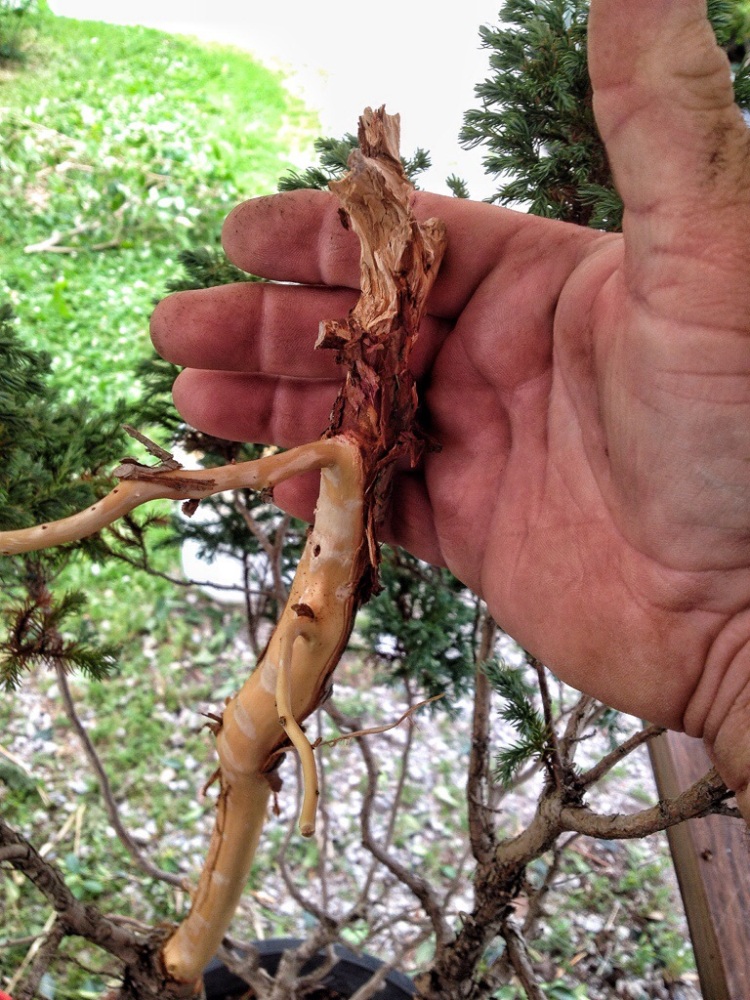

The branches grow in almost whorl like bunches.

Which I’ll have to deal with.
The Chamaecyparis’ generally don’t bud back well, so I can’t to a chop and wire job on it, my usual modus operendi.
Regardless of my earlier statements about taller trees, I still wanted to lower it a bit.
Time to wire, my friends, every single branch. Yoohoo!
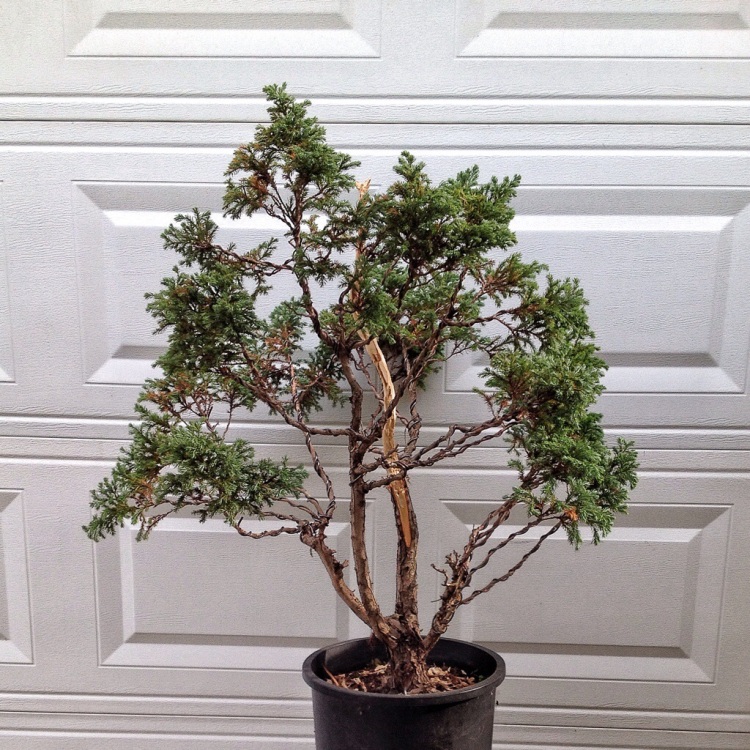
From what I’m reading, aftercare on this kind of tree, after wiring, is to baby it, out it in the shade, etc. as the moving of branches is a little stressful.
I lowered the top by about a foot- which shows off the Jin very well.

I kept the branching very three dimensional and I built a crown instead of an apex (we need to stop using that word, apex. Most trees don’t have one, except for Christmas trees, and I’m not putting a star on top of this tree even though it’d look neat right on that Jin).

The front.

The owner needs to keep the tree pinched back and do it often (I should note, I used scissors on it so there will be browning on the tips from the final pruning I did. Maintenance should generally be done with the fingers by pinching back new growth).
Now, with a slight quiver in my voice and a tear in my eye, it’s time to leave.
Many thanks to Darlene, Jerry, Chet and the two boys…

…Zander and Andrew, for putting up with me and my strange bonsai artist habits for the last two days.
And I’ll tell you what,those boys are sharp and will give their daddy a run for his money when they are older.
And Darlene, I know you’re anxious to see the day three post about the eight foot tall ficus called “Big Foot”, but you’ll have to wait until I get back to Florida, I have about a hundred photos to sift through on that session.
A last look at the tree:
Before-
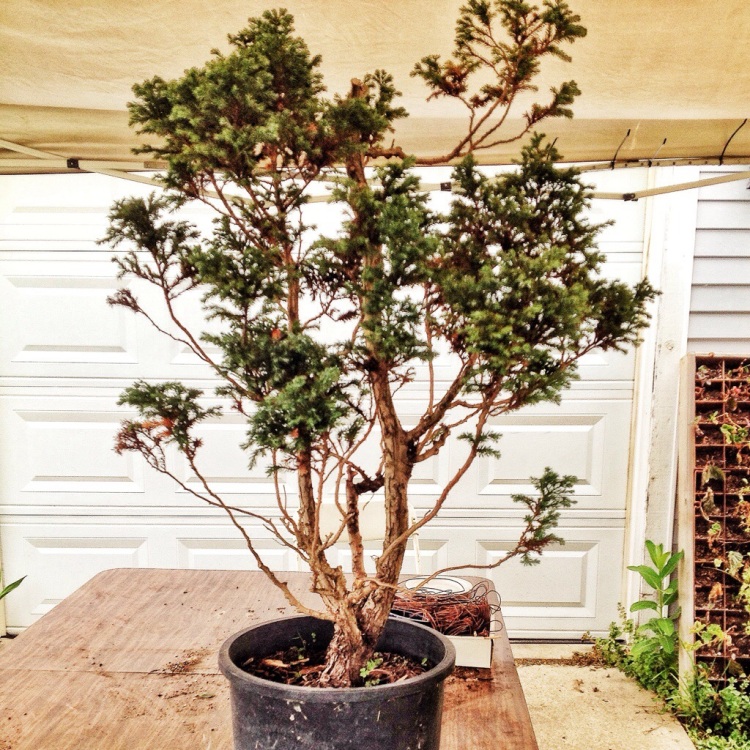
Middle-

And finished-
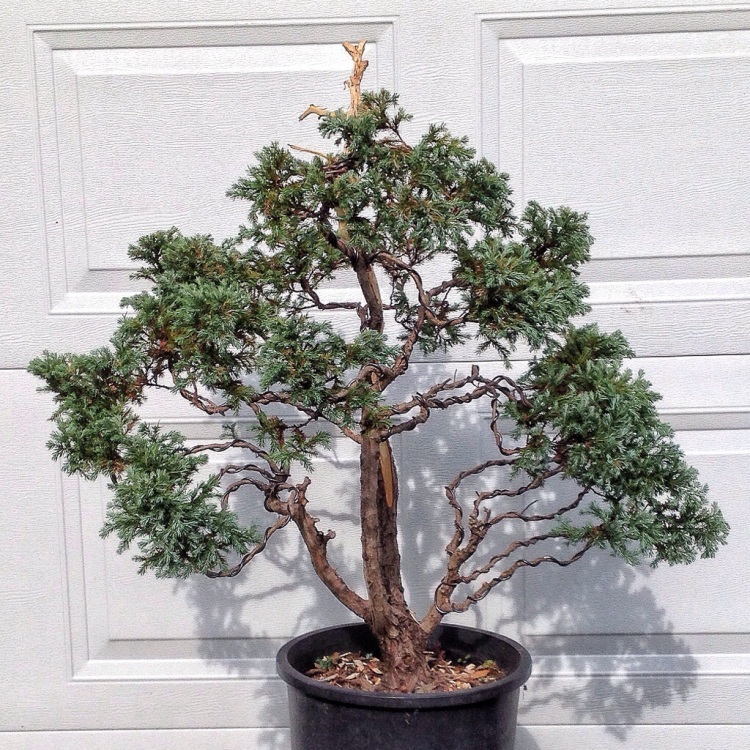
The next post will be on the Dayton and Cincinnati club’s demos (an ilex and a bald cypress) so stay tuned my bonsai friends, stay tuned!
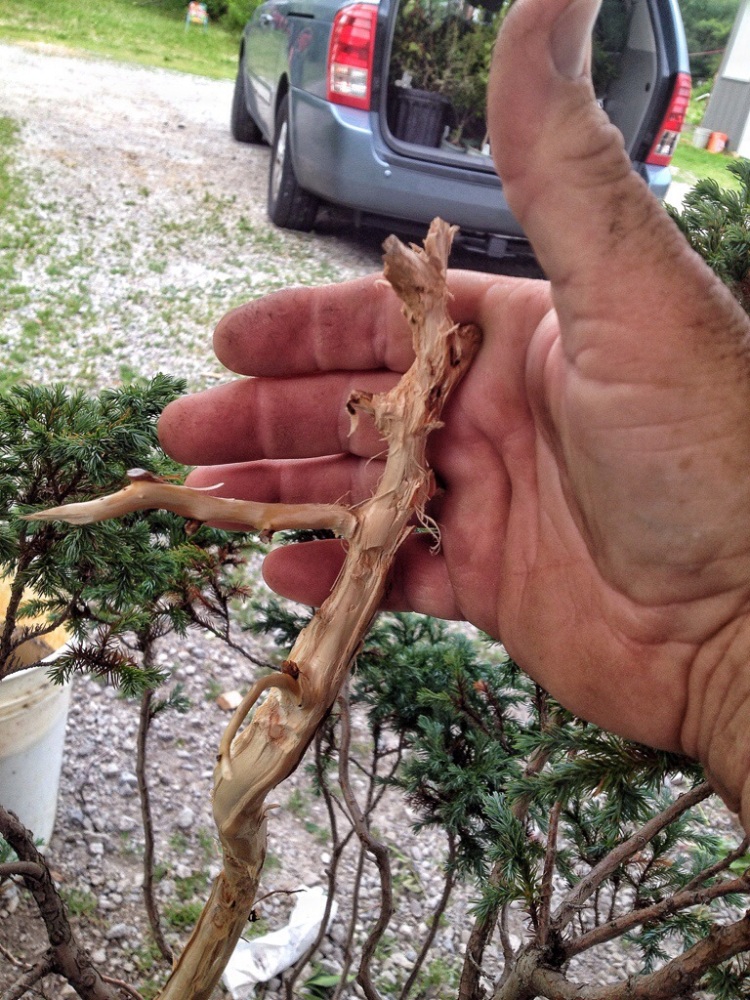
I was wondering what you might do with this one. I think it looks good!
LikeLike
The world will wait awhile for the story of Big Foot. Ed & I worked on Little Foot on Friday. Not quite as drastic as you did but I would say we cut 1/3rd of the tree off. You taught us well. I also worked on my bald cypress forest yesterday following your instructions of treating each tree as an individual tree. I considered you a fine guest and will look forward to having you back in the future.
LikeLike
Thank you very much for this article, I am making my second attempt on a boulevard. How do you identigy new shoots?
LikeLike
They are usually lighter in color and softer to the touch
LikeLike
Got an Chamaecyparis Iawsoniana “Ellwoodii” for Christmas, quite young at this point, trunk maybe the diameter of a crayola marker and total height 16 inches with trunk split about 3 inches up. Spring does not hit till around April up here because we are on the border between 4a and 4b, we don’t plant in the garden till Memorial day… frozen north and all… tree says it is zone 5. Looked for styling examples on your blog and web in general and cypress types must vary in natural growth habits by quite a bit. This variety has a very vertical growing habit, but wondering if that dooms it to a formal upright or if I can wire it now while young to create something else?
LikeLike
You can wire some movement now. If you plan on getting it bigger you need to grow it a little differently than as a bonsai. Bigger pots, more fertilizer etc.
LikeLiked by 1 person
No defoliation on something like this prior to wiring, correct? Think it is in a half gallon pot at the moment.
LikeLike
No defoliation, not on a conifer, you’ll kill it
LikeLike
See, I learned!!!
LikeLike
When is the best time to begin root work on a boulevard cypress?
LikeLike
As with many conifers, the best time is just the tree is coming out of dormancy in the spring. You’ll have to really watch it because if it’s an early spring, you may lose the opportunity. Many people do it early for that reason but then you have to protect any new roots from freezing if you get below 32/0
LikeLike